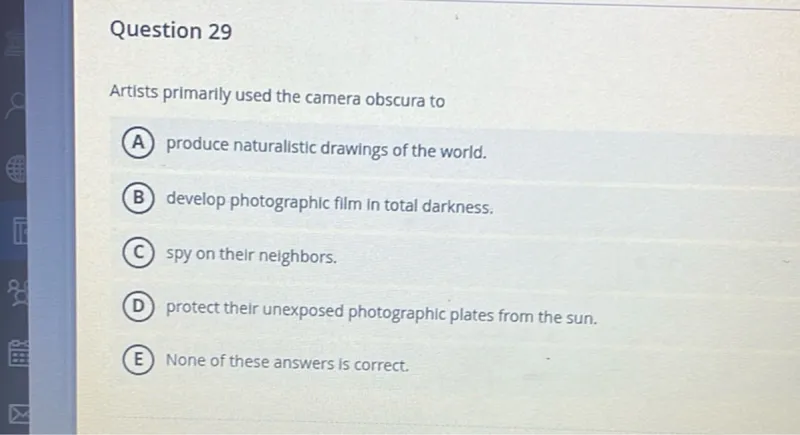Questions: Question 29 Artists primarily used the camera obscura to (A) produce naturalistic drawings of the world. (B) develop photographic film in total darkness. (C) spy on their neighbors. (D) protect their unexposed photographic plates from the sun. (E) None of these answers is correct.

Transcript text: Question 29
Artists primarily used the camera obscura to
(A) produce naturalistic drawings of the world.
(B) develop photographic film in total darkness.
(C) spy on their neighbors.
(D) protect their unexposed photographic plates from the sun.
(E) None of these answers is correct.





